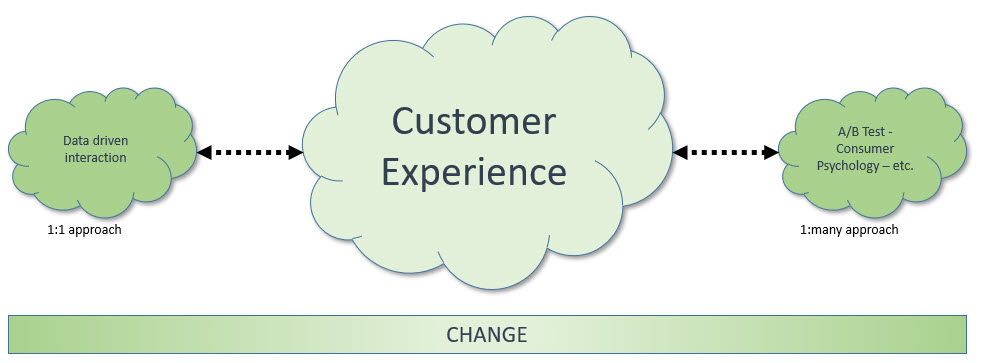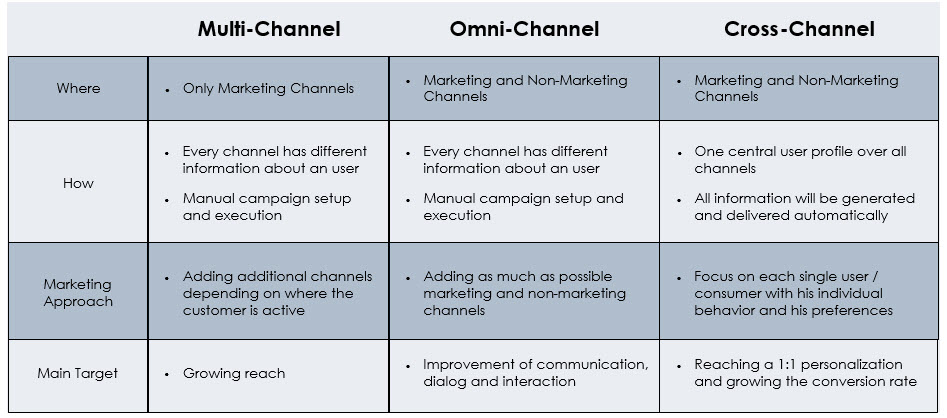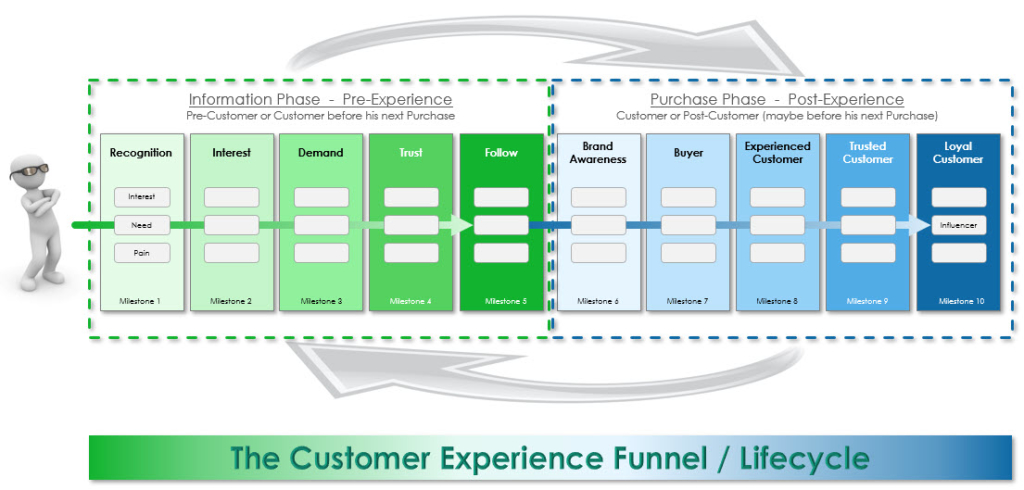
True CX requires lateral thinking. We need to transform our mindset, break down silos and face the operational marketing challenges.
The first silo is the corporate structure. We have sales, marketing, client service / support, product management and more. all with own goals which are mainly corporate driven. Is this still contemporary? How about if we change this departments in just functions and build departments like customer, analytics & BI, interact (with the functions communication, product management and trust)?
How can we change corporate goals into customer goals and how can we change personal goals into department goals (first) and common cross department goal which are only customer driven (second)? Do we need C-level and HR for this to eliminate the hand-brake employees have with this individual corporate driven goals while doing CX?
Trust is an important success factor for CX. Trust into a person and thrust into a company are very close together. Trust will be build on 3 pillars: Loyalty, Empathy, Logic
Often companies have a great strategy, but no real vision which aligns the different strategies and the changes in strategy into one direction. Do you think this results in trust in a customers mind? A customer needs to understand for what you are staying and this is not build because you tell this, this is build through your long-term acting.
Can’t highlight this points often enough, even if it is boring for many because they ask: And now? How do I need to start CX?
Just starting building a short-term strategy, projects and objectives /& key results is not enough. If they this steps are not build within the right environment they will be less successful or often fail
If this homework is done we can start asking what the customer goals are and in which milestones we can measure them.

Do we want to to act on a target group level with a 1: many approach, on a 1:1 level or do we want to combine these both approaches? What do we need to do so?
No it’s time to define the “marketing” direction.

There are 4 steps we always need to go through:
- Listen
- Understand
- Predict
- Interact
To do so we need to dive into the data we have, look which data we need to collect (internal, external paid and external earned), additionally. In which format (raw, aggregated, structured, un-structured) do we have these data and how do we bring the data-silos together.
Data are personal data, product data and content data while content data are a hermaphrodite.
Content is no oil, but data is is the new oil… while content is the pump which brings up the oil and empowers the data.
The data which are the oil are the personal data. Without content we do not interact with our customer and we do not know anything about them. Knowing them is the base for interacting, communication and marketing. We need to understand there preferences, their interest, their needs and their pains. Then we need to deliver the right information at the right time and place to support them in their stage (interest, need, pain).
Content will mostly replace advertising in future.
Advertising is mainly just clapping on your (as a brand) own shoulder telling you are the best. Is this of interest for your customer?
This is a one direction communication, what we need id a 2 direction interaction. We interact through communication, through products & services, through support and much more.
We need to answer in this interaction with the right product & services and the right information (content). If we have a content hub build up the right ways we can support this. The hub needs articles which are divided into blocks to make it possible to sort them to the individuals needs or build a new article out of 2,3,4,…. existing.
Now it’s time for the “customer journey” which I like to change a bit into the “CX Lifecycle. Here’s just a draft how this can look like.

Done? By far not! Improve is the most important step of evolution. We discover issues and new ideas. It is important to re-question everything every time… means be agile and flexible. We need to adopt to new situations, new requirements (market, customer, etc.) and then restart with stage 1.
Going back to stage 1 it is important to adopt the strategy maybe… but never change the vision.
Also interesting to read in this context:
